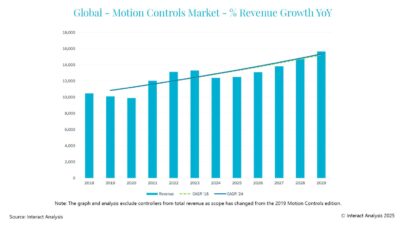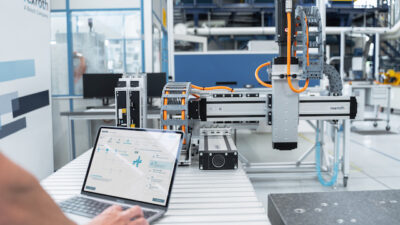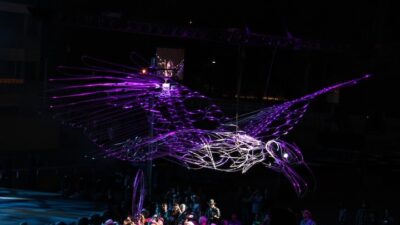In this issue:
|
|
Superconducting motors update
You can’t buy them yet, but high-temperature superconducting (HTS) motors moved closer to reality with the demonstration of 1,000-hp capability by a Reliance Electric ac synchronous HTS motor from Rockwell Automation (Greenville, S.C.). Ongoing tests include running the HTS motor from startup to 1,800 rpm, under control of an inverter drive. Another first for the demo: the HTS motor operated with a closed-loop refrigeration system.
American Superconductor Corp. (Westborough, Mass.) supplied the motor’s HTS wires that replace traditional copper wires in the rotating field coils. High-temperature superconductivity is a very relative term. For this development it refers to a still mighty cold 27-30 K range (that is, -246 to -243 degrees C).
This significant 1,000-hp milestone is part of the Superconductivity Partnership Initiative (SPI), a U.S. Department of Energy project begun in 1987 with the intent to commercialize HTS motors. The objective of SPI is dramatic increase of electrical efficiency that reduces HTS motors’ volume and energy losses by 50%, compared to conventional electric motors.
For more about the HTS demo, see the Daily News item for August 2 .
Back to top
Chipset adds step motor control
Performance Motion Devices Inc. ‘s (Lexington, Mass.) Navigator family now includes motion controllers for stepping motors, in addition to brush and brushless servo motors. MC2500 chipset-made up of a 132-pin processor and a 100-pin logic device powered by 5 V-relieves the host processor of ‘resource-intensive’ motion control functions. It provides 5 M-pulse/sec programmable pulse-and-direction output, several move profiles (S-curve, trapezoidal, velocity contouring, electronic gearing, etc.), and various general-purpose analog and discrete I/O signals. MC2500 accepts feedback from an incremental encoder (5 Mcounts/sec max.) or absolute encoder or resolver (160 Mcounts/sec max.). Engineering samples are available now. Pricing starts at $46 in OEM quantities, with a Developer’s Kit offered at $995.
Back to top
Step-motor-based motion systems survey
My June cover story posed a 10-second survey question: What’s the most important feature in your next stepper system? Unscientific results indicate 26.3% of readers want an ‘Integrated motor/drive/controller design.’ Next most desirable features were ‘Built-in communications ability’ and ‘Price’ (21.0% each), followed by ‘Easy configuration’ and (tongue in cheek) ‘That it be a servo system’ (15.8% each). Somewhat of a surprise, ‘Stall detection with or without feedback’ drew no responses.
Back to top
Wanted: Users’ views on ‘soft motion’
Control Engineering ‘s September issue will include an article by a technology supplier for ‘Soft Motion’-that is, motion control done entirely on the CPU of a PC with integrated software, and not dependent on any specific controller hardware. There will be an online addendum to the article, covering other product suppliers, soft motion developments, and any related issues or news.
I need your input for this Online Extra. What are your thoughts and concerns about this emerging motion control sector? Users-and prospective users-of soft motion products (no suppliers) please send your experiences, views, or estimates about this technology’s potential. E-mail [email protected] .
Back to top
Companies in motion
Schneider Electric of France and Toshiba Corp. of Japan recently announced the intent to form a 60%-40% joint venture for more rapid development and manufacture of ac adjustable-speed drives in the 0.1-630 kW (0.13-840 hp) range. The new entity, to be named Schneider Toshiba Inverter SAS , will have three company sites. Headquarters and European subsidiary in France and a Japanese subsidiary are expected to be running in 2001, while the U.S. subsidiary will open later. Schneider Electric and Toshiba intend to focus on a ‘common’ drive platform for global usage, leveraging individual strengths to cut development costs and time to market in the highly competitive general-purpose industrial drives arena. The companies’ previous joint ventures in Asia go back over a decade.
A 22,000 sq. ft. Design, Development, and Reliability Laboratory recently became part of Baldor Electric Co. ‘s Drives Center located in Fort Smith, Ark. The new lab will perform a wide range of hardware/software testing and simulation during product development, as well as work closely with Baldor design engineers and customers. Quality and reliability aspects of product testing will be included through Failure Mode and Effect Analysis (FMEA) and Highly Accelerated Life Test (HALT). Capability to test motors and controls up to 1,000 hp will be available by 3Q00.
Think & Do Software/Animatics- Animatics Corp. (Santa Clara, Calif.) becomes the latest motion control supplier to be associated with Think & Do Software (Ann Arbor, Mich.). A new driver allows Think & Do’s software products to access to Animatics’ SmartMotor family, which is a complete servo positioning system up to 7.5 kW, combining a brushless servo motor, controller, amplifier, encoder, power supply, etc. (see CE , Dec., 1997, pp. 38, 42 ).
Back to top
Worth reading
A brand new book, ‘Control System Design Guide’ (Academic Press) by George Ellis, senior scientist at Kollmorgen (Radford Va.), should be a welcome addition to most control engineering professionals’ reference library. Organized in three sections, the wide-ranging book has special appeal to this newsletter because of a large section devoted to Motion Control. It follows sections on ‘Applied Principles of Controls’ and ‘Modeling.’ The PC-oriented book uses ModelQ, a Microsoft Windows-based modeling and simulation program written by the author, to effectively demonstrate control concepts. Nine appendices add usefulness in the form of analytical methods, transformations, and guidance for using ModelQ. As an example of interesting details covered, Appendix B compares function block symbols as used in Europe and North America. See CE , April 2000 (pp. 71-78) for one illustration of applying ModelQ software; go online for a free download .
Back to top
Need to transmit motion into vacuum or sealed spaces?
A servo actuator and rotary feedthrough device in one sealed package does just that for precise motion control in vacuum chambers. Harmonic Drive Technologies (Peabody, Mass.) now offers its ChamberLink actuators in higher output models.
The harmonic drive element mounts to the chamber structure, forming the interface seal between the motor and input parts on the chamber’s ambient side and the geared output shaft on the vacuum side. This approach does away with a cumbersome rotary feedthrough requiring o-rings or ferrofluid sealing for the penetrating shaft-or a magnetic feedthrough that does not provide direct connection. ChamberLInk 14 offers 40 lb-in. continuous torque at 70 rpm, while ChamberLInk 32 offers 500 lb-in. torque for higher loads.
Back to top
Product information/guidance for the asking
Product Bulletin LC6 describes Lo-Cog, 26 mm iron-core brush-commutated dc motors from Pittman (Harleysville, Pa.). Intended for lower load process, industrial, and office automation markets, the motors supply up to 3.17 oz-in. continuous torque (20 oz-in. peak) with speeds up to 9,000 rpm.
Said to be ‘easy to navigate’-a new multimedia Product CD from Data Device Corp . (Bohemia, N.Y.) includes sections on Motor Drives/Controllers and Motion Feedback Technologies such as synchros and resolvers. Data sheets, app notes, designers guides, etc. can be accessed.
Back to top
Control Engineering in July and August
See my July Back to Basics article on ‘Rotary Encoders’ and an online follow up on related materials . July’s ‘Products & Software’ section leads off with an exclusive announcement of a new line of solid-state motor starters with wide power and voltage range. Also in this section, look for ‘universal’ variable-frequency drive; 32-axis, high-speed motion controller; encoder isolator; small inverter-duty ac motor; capacitance-based rotary/linear encoder; dual servo amplifier package; and servo sizing software that round out pertinent products.
In August, automated failure detection in electric motors is the focus of Technology Update. It features Motion Condition Monitor-a new hardware and software tool from the Turkish company, Artesis (Istanbul). August’s Product Focus on servo motors looks at results of original research based on readers’ input. Trends, issues, and a sampling of servo motor products is included. Check out more related items in the main Products section: PCI motion controller, servo drive matched to load inertia, brush- and brushless-motor amplifier, flash-memory DSP for embedded motor control, and software-only motion controller. News coverage of the upcoming International Manufacturing Technology Show (Chicago, Sept 6-13), the largest industrial show in the U.S., also includes motion and motors-related items.
Back to top



